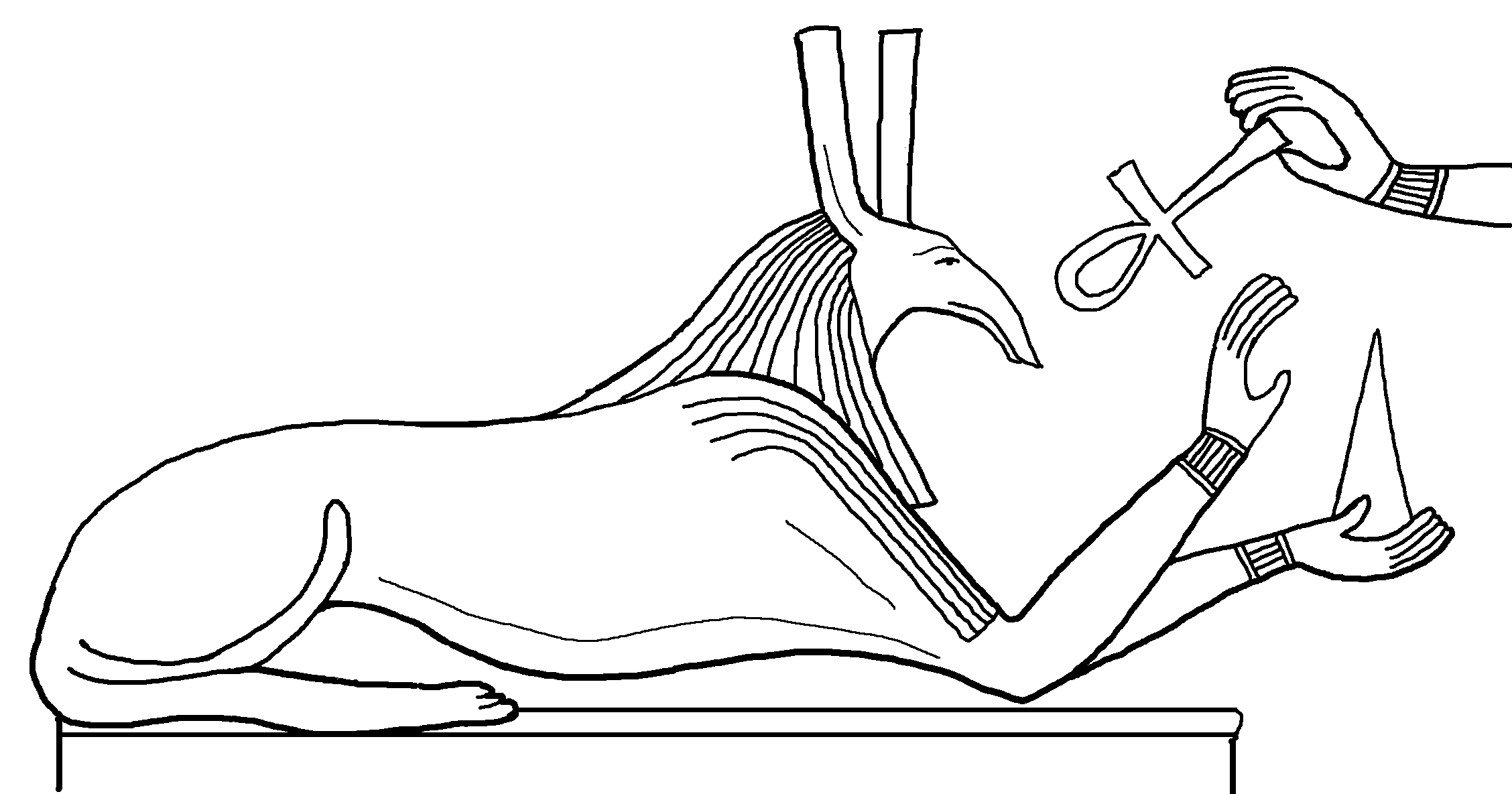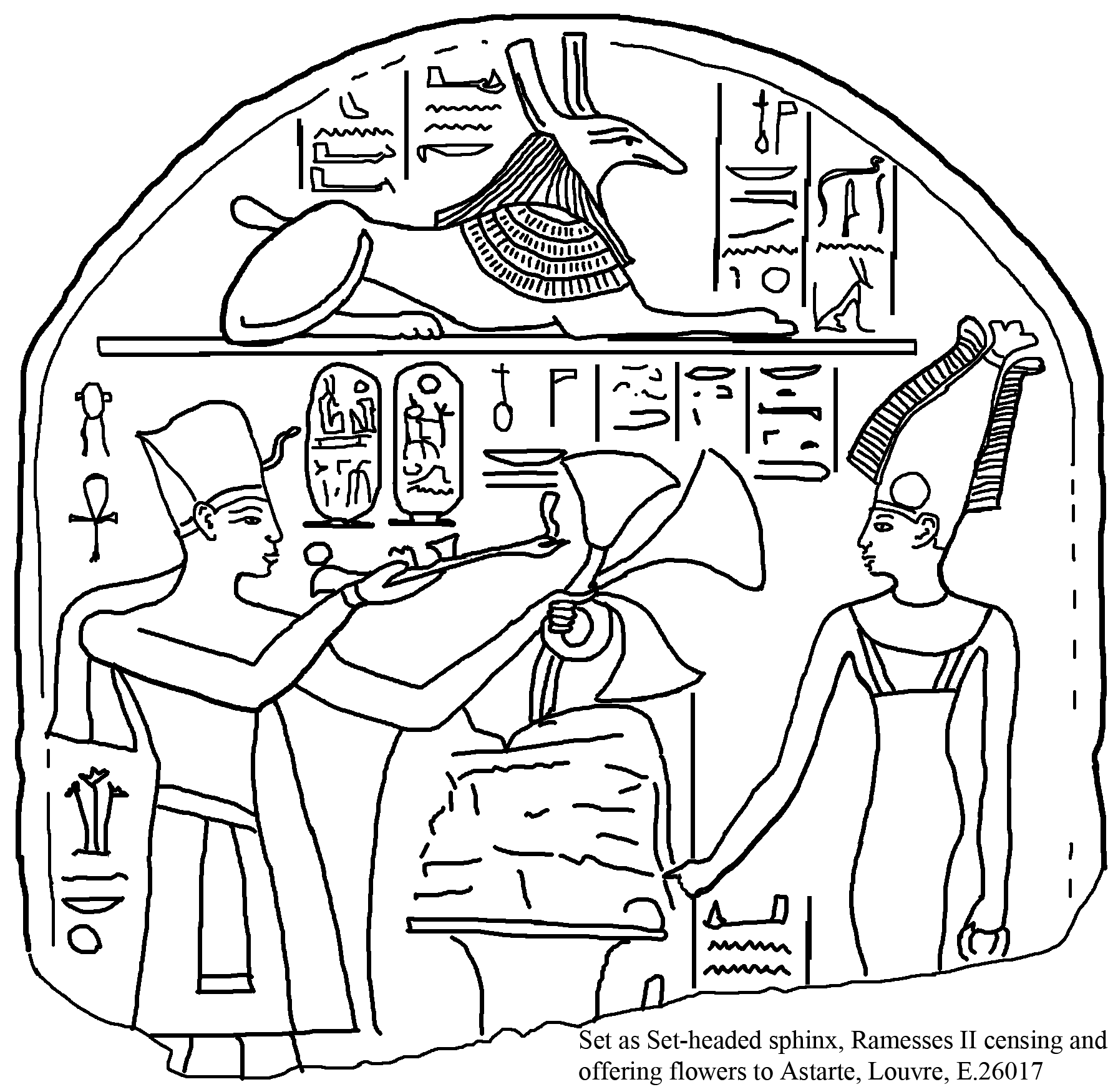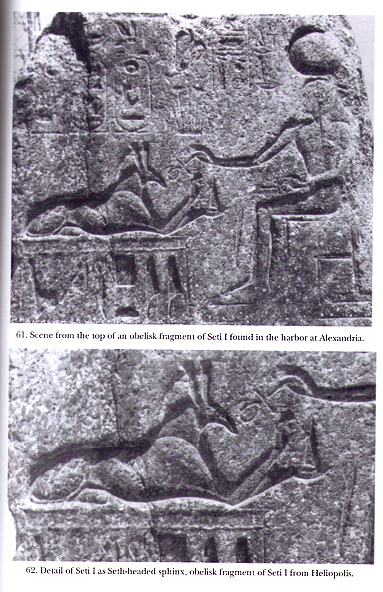
Scene from the top of an obelisk fragment of Seti I found in the harbor at Alexandria
Detail of Seti I as Seth headed sphinx, obelisk fragment of Seti I from Heliopolis
_The Monuments of Seti I: Epigraphic, Historical and Art Historical Analysis_ By Peter James Brand
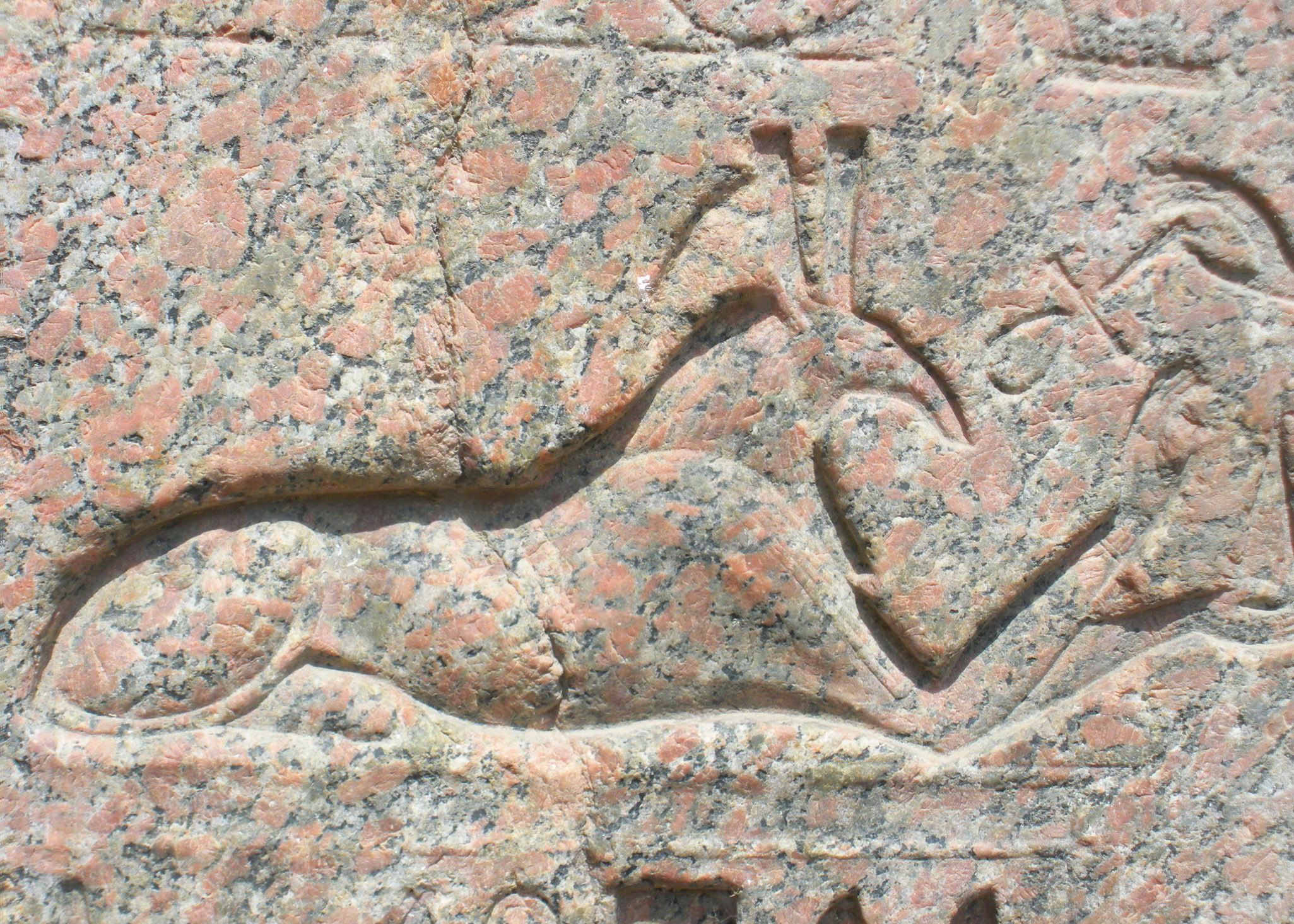
Photo by Heidi Kontkanen 2011, she also has a view in larger context and a view of the whole piece, now at Kom el Dikka, Alexandria.
|
Brand explains: "In 1994, a French expedition working in the harbor of Alexandria near the Qaitbay fort discovered thousands of pharaonic sculptures, architectural fragments and other monuments in a submerged area comprising some 2.25 hectares. Among these were fragments of obelisks of Seti I. Only a couple of preliminary reports on these discoveries have been published to date. One fragment belongs to the uppermost shaft of a medium sized obelisk, probably twelve to fifteen meters hight, made of pink granite. Its pyramidion is missing, but the offering scenes at the top of the shaft are preserved (figs. 61 & 64). They feature the king as a sphinx before two enthroned manifestations of the Heliopolitan solar deities, the most remarkable ones being two vignettes in which the sphinx representing Seti I has the head of the Seth animal (fig. 62). A smaller fragment derives from a corner of the lower shaft. "One would expect from this iconography that the obelisk had derived from ancient Heliopolois. Many pharaonic monuments were removed from that site to Alexandria in late antiquity, including several belonging to Seti I." (page 135) In that obelisk Seti I appears as a Set headed sphinx. However sometimes Set himself appears as a sphinx. The Louvre has a stele with him thusly: |
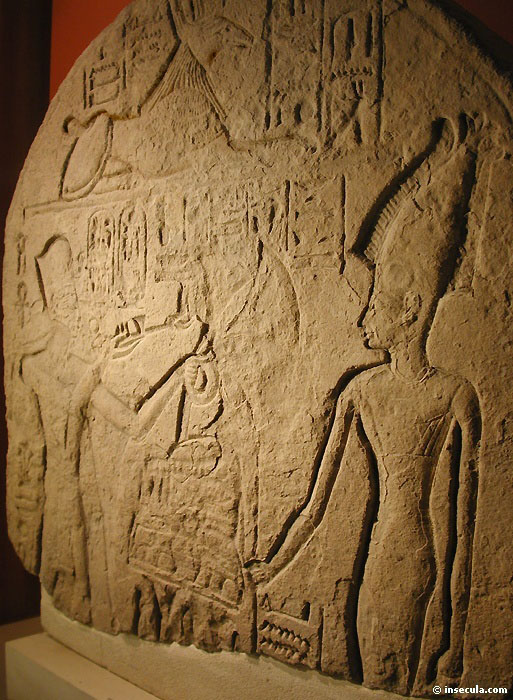
© insecula.com
|
I found this reference to it in a pdf concerning New Kingdom Royal stelae
803-044-570 Round-topped stela, bottom part lost, Seth as Seth-headed sphinx, and below, Ramesses II censing and offering flowers to Astarte, temp. Ramesses II, in Paris, Musée du Louvre, E.26017 I tried to find a better photo at the Louvre, but was unable. But I found this in my files, and was able to track down the source: |
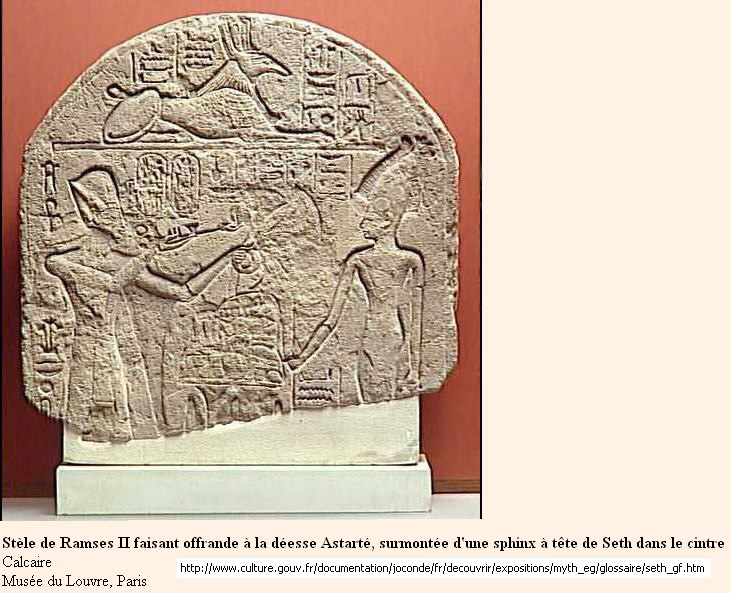
Ministère de la Culture
"Stèle de Ramses II faisant offrande à la déesse Astarté, surmontée d'une sphinx à tête de Seth dans le cintre, Calcaire"
"Stele of Ramses II making offering to the goddess Astarté, underneath a sphinx with Seth's head in the rounded arch, Limestone"
|
There is a photo of the top half at the Louvre's website, along with this description:
We now know it's about nineteen inches tall. Undamaged, it was probably a good two feet tall. |



